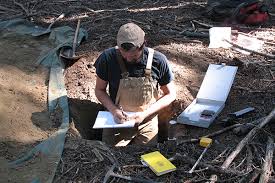Earth's bedrock: New source of global nitrogen discovered
According to recently published study, over quarter of nitrogen on Earth comes from weathering of planet’s bedrock. For centuries, prevailing science indicated that all of nitrogen on Earth available to plants comes from atmosphere. This study could greatly improve climate change projections.
Key Facts
The study has found that up to 26% of nitrogen in natural ecosystems is sourced from weathering of rocks, with remaining fraction from atmosphere. But input of this nitrogen source in global land system is unknown.
This study shows that nitrogen weathering is globally significant source of nutrition to soils and ecosystems worldwide. Ecosystems need nitrogen and other nutrients to absorb carbon dioxide (CO2) pollution and there is limited amount of it available from plants and soils.
Geology and carbon sequestration: Rock-derived nitrogen may fuel growth of forests and grasslands, and allow them to sequester more CO2 than previously thought. However, according to this study not just any rock can leach nitrogen. Rock nitrogen availability is determined by weathering, which can be physical, such as through tectonic movement or chemical i.e. when minerals react with rainwater.
Significance: The discovery will greatly improve climate change projections, which rely on understanding carbon cycle. It will also feed carbon cycle on land, allowing ecosystems to pull more emissions out of the atmosphere. Mapping nutrient profiles in rocks for their carbon uptake potential can help drive conservation efforts.
The work also helps solve case of the missing nitrogen. For decades, scientists had recognized that more nitrogen accumulates in soils and plants than can be explained by input from atmosphere alone, but they couldn’t pinpoint what was missing.
Month: Current Affairs - April, 2018


